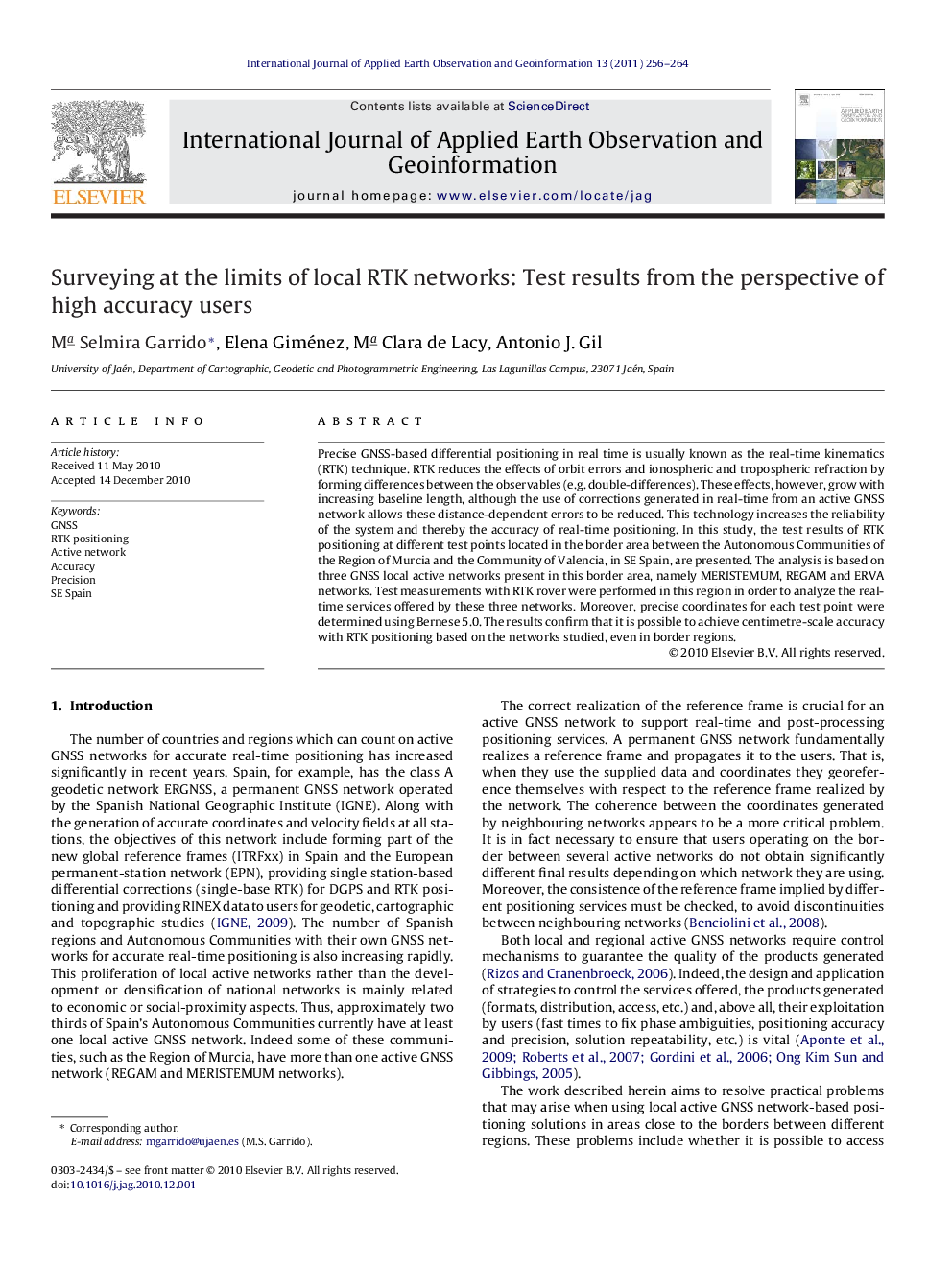| Article ID | Journal | Published Year | Pages | File Type |
|---|---|---|---|---|
| 4465075 | International Journal of Applied Earth Observation and Geoinformation | 2011 | 9 Pages |
Precise GNSS-based differential positioning in real time is usually known as the real-time kinematics (RTK) technique. RTK reduces the effects of orbit errors and ionospheric and tropospheric refraction by forming differences between the observables (e.g. double-differences). These effects, however, grow with increasing baseline length, although the use of corrections generated in real-time from an active GNSS network allows these distance-dependent errors to be reduced. This technology increases the reliability of the system and thereby the accuracy of real-time positioning. In this study, the test results of RTK positioning at different test points located in the border area between the Autonomous Communities of the Region of Murcia and the Community of Valencia, in SE Spain, are presented. The analysis is based on three GNSS local active networks present in this border area, namely MERISTEMUM, REGAM and ERVA networks. Test measurements with RTK rover were performed in this region in order to analyze the real-time services offered by these three networks. Moreover, precise coordinates for each test point were determined using Bernese 5.0. The results confirm that it is possible to achieve centimetre-scale accuracy with RTK positioning based on the networks studied, even in border regions.
Research highlights▶ The availability of three local active networks (REGAM, MERISTEMUM and ERVA) close to the border region between the Region of Murcia and the Community of Valencia (SE Spain) has allowed to analyze the accuracy and precision achieved in real-time positioning. ▶ The test results of RTK positioning in border regions show that it is possible to achieve centimetre-scale accuracy with RTK positioning based on the RTK networks. ▶ The homogeneity of the precision results obtained for the east and north components, although not for the up component, when using network solutions offered by the various networks studied, irrespective of the approach used by them (MAC or VRS), should be noted. ▶ The time to fix ambiguities was found to be very similar across all networks and much lower than 90 s.
